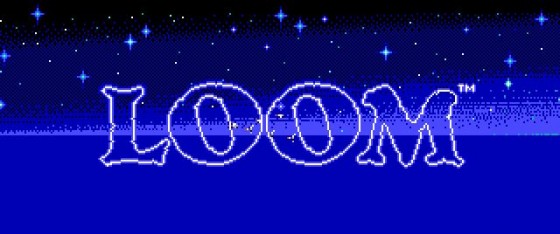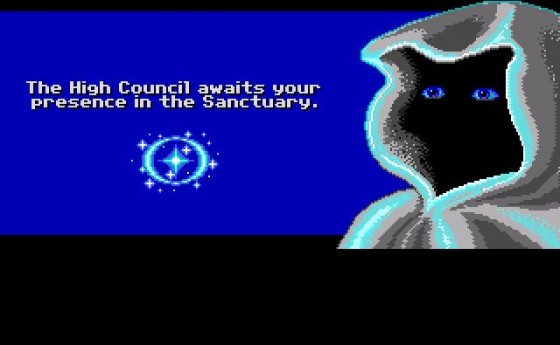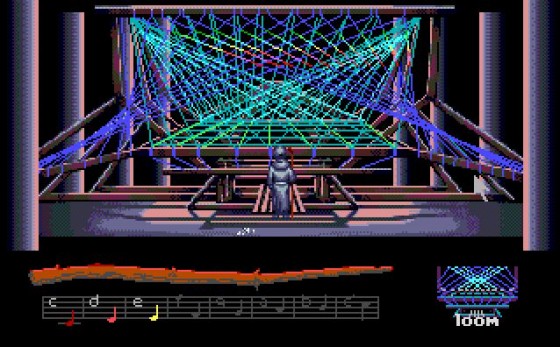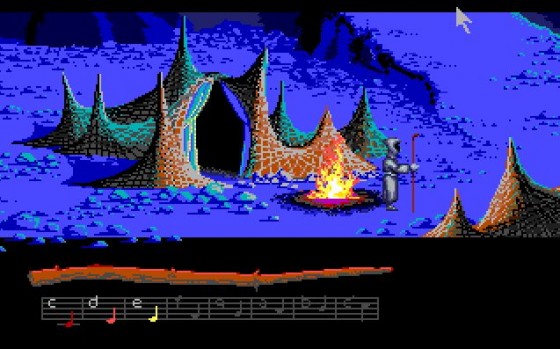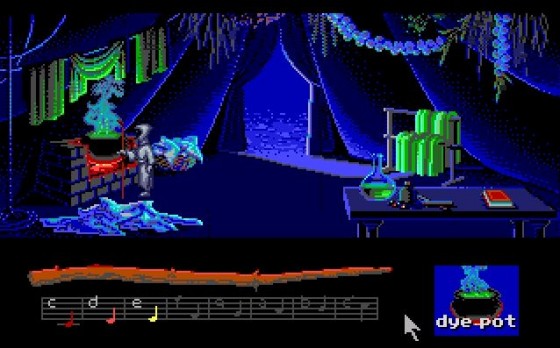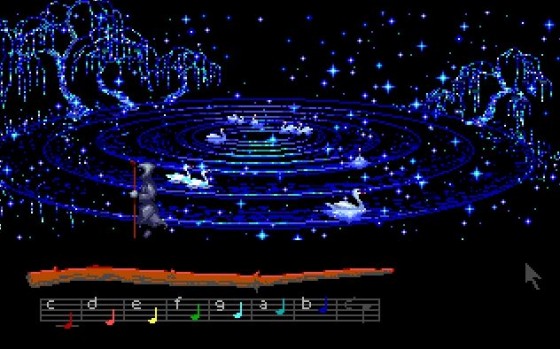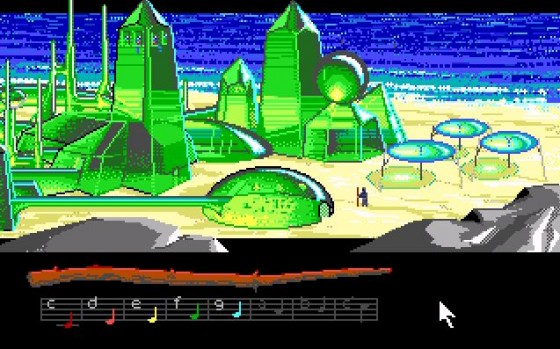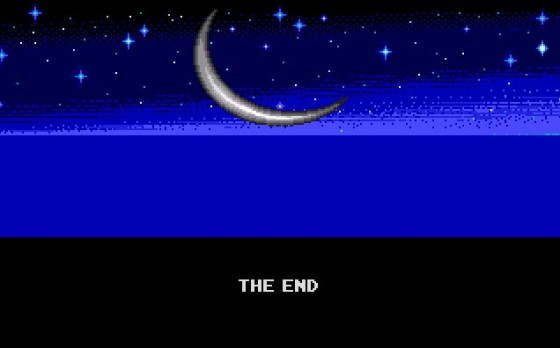The acquisition of LucasFilms by the media giant Disney came with promises of many great things. Sadly, it came with some downsides as well. One of these was the closure of LucasArts, who were responsible for some fantastic games throughout the years. Most notable are their adventure games, such as The Secret of Monkey Island, Sam & Max, Maniac Mansion, and Grim Fandango. Their games appeared on many platforms throughout the years including Amiga, Commodore 64, NES, FM Towns Marty and Sega CD. They even had a game on TurboGrafx-16, called Loom. While it was released on other platforms, I want to take a look at this version of the game specifically.
In Loom, you take control of Bobbin Threadbare, who is the black sheep of the Guild of Weavers. There are other Guilds as well; you’ll be introduced to them later. As the game starts out, you are summoned by the Elders whom you’ll notice are all named after the Morai from Greek mythology: Cletho, Lachesis, and Atropos. Just as the Morai control fate, the Elders control the Great Loom, which weaves patterns into the fabric of reality.
You witness a conversation between the Elders and Lady Hetchel, your caretaker, which results in Hetchel being turned into an egg. Afterwards the Elders are turned into swans and flee the village leaving only yourself. After claiming the distaff and “hatching” Hetchel, you learn of a Third Shadow that is coming. This will cause chaos to spread across the land which is somehow kind of your fault. You take up the Elder’s distaff and venture out to find the flock of swans so you can rejoin with them to escape the dark threat.
The story was written by Brian Moriarty, who was also behind Wishbringer, Beyond Zork, and Young Indiana Jones. The setting and storyline is nothing short of imaginative and unearthly. Even though there is some humor laden about, the plot is relatively dark. While some of its themes are cliched, such as an army of the undead and the idea that the outcast of a society can become the powerful savior, the way everything comes together is very original.
Unlike other adventure games of its time, Loom doesn’t have a complex inventory system or use a series of verbs to interact with objects. While this makes Loom a bit simpler than some of the other adventure games of its time, it doesn’t cheapen the experience. It makes it very easy to pick up and play.
You learn a series of spells called drafts which are performed using four musical note patterns, similar to The Legend of Zelda: Ocarina of Time. Most of the drafts can be done backwards to reverse the action that’s caused. For example, you can turn straw into gold and back into straw. You learn higher notes on your distaff as you move on allowing you to weave more powerful drafts. The mechanic helps drive you to explore different areas. Sometimes you’ll come across a draft that you can’t play yet but see a place where you’ll need to use it. You’ll need to accomplish more tasks to learn the notes you need to play.
Although there are three difficulty modes, there isn’t much difference between them. Bobbin can’t die, and the biggest challenge is remembering the drafts. You’re going to want to be writing them down, as there isn’t a way to keep track of them in-game. The practice mode lists what notes you’ve played in a box, which doesn’t really help. Expert mode takes away the musical staff, making you perform all of your drafts by ear. It’s difficult if you’re tone-deaf like I am. I can’t say there’s much replay value unless you want to experience the story again. The game is rather short, about two hours long. Once you know what to do, you can breeze through it in about forty-five minutes. The drafts are randomized each time, though, so you do need to go and learn them all again.
I felt the music was one of the games most prominent features. It’s all excerpts from Tchaikovsky’s “Swan Lake.” It’s appropriate, as several themes in the game were inspired by the ballet. Since this is a TurboGrafx-16 CD game, all of the music is high quality CD-audio. It’s synthesized orchestral and it sounds great and pulls together the whole experience. While the later versions of Loom also used CD-audio music, I actually prefer this version. It’s still relatively simple, where other versions seemed like there was too much going on.
Since this is a Super CD-Rom game, meaning it requires the Super System 3.0 card or a TurboDuo, it takes advantage of the higher-end graphics capabilities of the TurboGrafx-16. With its higher detail and remastered music, you can consider this an enhanced version of the original EGA DOS release. LucasArts did a lot with what they had to work with at the time. The environments are detailed and have a surreal look to them. Each place you visit is vastly different from the last, going from dark and brooding caves to brilliant cities of glass.
Loom was the first SCUMM based game I played from start to finish. I felt like I sat down and read a good book more so than played a game. I wish more games left me feeling that way. If you want to check the game out and don’t want to track down the TurboGrafx-16 version, you can buy Loom on Steam. It’s based off the later PC release which features voice acting, a wider color palette, and higher resolution. Loom is well worth a playthrough, no matter which version you can get your hands on. It’s a great stepping stone into the world of SCUMM based games and seeing some of LucasArts other fine works. Although the story to Loom ends in a cliffhanger, there never was a sequel. Supposedly it was planned to be the first of a trilogy of games, but the developers moved on to other projects and lost interest. I’d love to see more of the world of Loom, but sadly it’ll probably never happen.
Seen it? Completed it? Trying to figure out if Bobbin can unmake himself and ruin reality forever? I want to hear! Comment below or hit me up on Facebook or Twitter.

